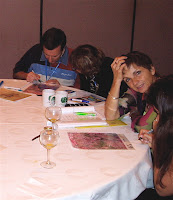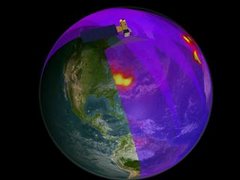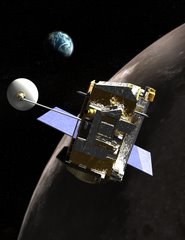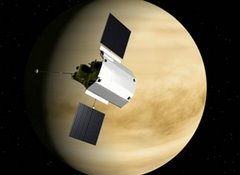During the week-long Girl Scouts USA core trainers workshop at
NASA's Johnson Space Center participants learned about the engineering and science related to the robotic exploration of the Moon and Mars. They did a variety of hands on activities, toured labs and heard from scientists and engineers who are part of robotic exploration programs. They received Lego Robotic Kits, a Robotic Arm Trainer and a hand held
Alta Spectrometer. Their final activity or "capstone experience", the
Robotic Design Challenge, was to propose, design and build a robotic mission to the Moon or Mars. The mission had to address one or more of NASA's science and exploration objectives associated with the return of humans to the Moon and on to Mars. Here is the mission proposal and design from one of our teams
Robotic Exploration Design Challenge Mission Plan/Proposal
Heide Basinger, Girl Scouts of the Huron Valley Council
Carol Chu, Washington Rock Girl Scout Council
Terry Gryting, Girl Scouts Susitna Council
Faye Van Dyke, Angeles Girl Scout Council

LALUNA MISSION
Chandrayaan-1 will launch in March 2008. Two months into this mission by the Indian Space Research Organization (ISRO), the Moon Mineralogy Mapper (M3) will have returned images showing the mineral composition on the entire surface of the Moon. Our robotics exploration mission (LaLuna) will be based on their findings about the location of the mineral ilmenite, a mineral made up of iron titanium oxide. The mineral ilmenite will be critical to a sustained human presence on the Moon because it can be heated to release oxygen.
LaLuna will then determine the depth of the ilmenite deposit. Determining the depth of the ilmenite will aid in determining the volume, and therefore the quantities of oxygen that might be produced. Decisions could then be made about our ability to produce enough oxygen to sustain human life.
MISSION PLAN:
The spacecraft used to carry out the LaLuna Mission will cost $235 Million, with a mass requirement of 81 and requiring 30 units of power. After landing on the surface of the Moon, our robotic mission will use a spectrometer to first confirm the presence of ilmenite, and then will attempt to drill 4 meters into the Moon’s surface. Extracting a core sample, the spectrometer will verify the presence of ilmenite at various points along the core sample to determine the depth of the deposit. The robotic arm can rotate to drill in multiple nearby locations at the landing site.
PROCESS:
The LaLuna Mission Team considered some important questions that need to be answered to help determine the viability of sustaining a human presence on the moon. It was determined that providing another piece of the puzzle, ability to produce sufficient oxygen, would work toward this end.
Using information gained during this week of workshop sessions and tours, we discussed the science, which led to a list of the instruments needed. A design was sketched and changed multiple times as the discussion continued and ideas evolved, and better methods were discovered and ideas were discarded. The Team also considered the cost and energy and mass requirements.
Materials were gathered to construct a model using the design. A model was built which fit the size and materials specifications.
The LaLuna team during their

presentation to the review panel.









